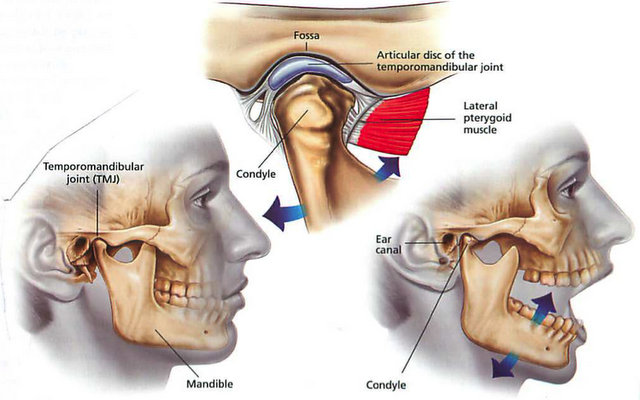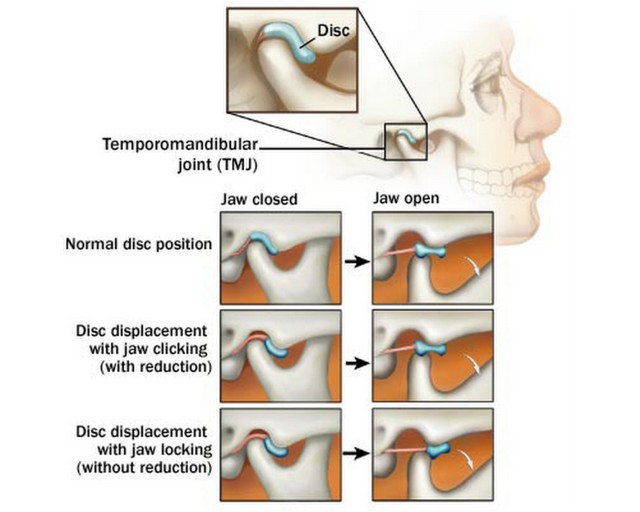Many people are often surprised to find out that Osteopaths treat the temporomandibular joint (TMJ), more commonly known as the jaw. However, there are a number of excellent reasons that an Osteopath may assess and treat the jaw
HEADACHES
TEMPORAL HEADACHES
The temporalis muscle spans the temporal region and tight bands called trigger points often exist within this muscle. The muscle assists in closing the jaw and may be overly tight in people who clench, grind or chew gum frequently. Have you ever noticed the urge to massage your temples when a headache occurs?
OTHER HEADACHES AND NECK PAIN
The jaw bears a close anatomical relationship to the skull and the upper neck joints. Osteopaths may assess the jaw for unusual movement patterns or surrounding muscle tightness in headache and neck pain sufferers.
EAR ACHE
The TMJ is located between the lower jaw and the skull and is connected by a number of muscles and ligaments, with a cushioning disc in between. The temporal bone is the part of the skull that the lower jaw is attached to. The ear canal runs through the temporal bone and makes the TMJ an important area of assessment in people suffering from ear ache, especially where other causes for ear ache have been eliminated.
TEMPOROMANDIBULAR DISORDER
This problem often presents as pain over the jaw or clicking, grinding or locking of the jaw and is a common condition in people who chew gum, eat nuts or crunchy bread frequently. It also presents in people who clench their jaw or grind their teeth. The TMJ resembles a ball and socket joint, with an intervening disc that allows the joint to move smoothly. In people with a deep overbite, narrow upper jaw or crooked front teeth or where the lower jaw is too far back the bite may not be correct. This can cause the jaw to become displaced and the cushioning disc pulled forward. The displacement has a tendency to cause the lower jaw to move backwards, with the ball part compressing nerves, blood vessels and connective tissue at the back of the joint. The disc displacement can create clicking and popping of the jaw.
Here is where the temporomandibular joint is located:
And here is an illustration of what occurs when the cushioning disc is displaced:
Here’s a good detailed explanation of Temporomandibular Joint Disorder.
Displacement of the disc also leads to increased contact between the condyle (lower jaw – “ball”) and the skull’s bony “socket”, which, over time can result in degenerative changes.
Osteopaths can assess and treat movement restrictions of the jaw and the function of the surrounding muscles. As well as teach exercises and stretching to relax the jaw.
info@



